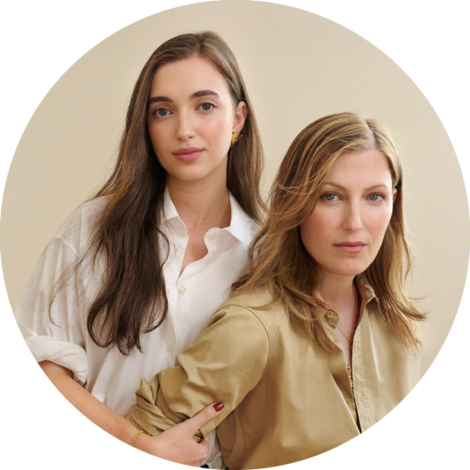When Vera Wang was dancing at the School of American Ballet and training to be an Olympic figure skater, she found her look: long hair, body-conscious clothing with a lot of stretch, and little to no makeup. Throughout her career as a fashion editor at Vogue, a design director at Ralph Lauren, and the founder and designer of an especially sophisticated line of wedding dresses, Wang has adhered to that early, simple formula. At 74, she’s celebrating her 35th anniversary as a designer with an award from the Council of Fashion Designers of America. She also has a National Medal of Arts under her belt. She’s been commended for “aging backward,” and says, “I don’t know if that’s necessarily flattering.”
I was a skater and an athlete for almost 20 years, and I was a dancer at the School of American Ballet for about nine years. That’s very specific. You study your body and your line, and you always are in front of a mirror trying to create movement and position. That doesn’t leave you just because you stopped competing and dancing. I mean, that stays with you for a lifetime.
I’m built very much like a figure skater or a ballet dancer. You always want what you don’t have. I always thought I’d be really tall and very curvy. And I always thought that was really sexy. And I never had that kind of body.
I pretty much dress according to not only my body type but to my lifestyle. Leggings and layering of leggings and wrap sweaters—those things were normal for me. When I started to dress that way with my children, they were horrified. I used to pick them up or take them to school, and they’d say, “Please don’t come in a legging when all the other mothers are in a Chanel suit” kind of things. People thought I was in my underwear. I would wear Danskin and they would think, She’s insane, this woman. But I need to be comfortable. Designing can be very physically demanding. You really have to feel almost athletic.
I arrived on my first day at Vogue, in 1971, wearing a Saint Laurent shirtwaist, a robe chemisier, as he called it. It was white crêpe. I wore platform shoes with the ankle strap and red lacquered nail polish. I wanted to look worthy of Vogue. And my boss, Polly Mellen, was shocked. She said, “We’re going to the studio. Would you please go home and cut your nails, take off the polish, put on some shoes that are appropriate and jeans and a T-shirt? You’re going to be unpacking a ton of clothing and accessories.” So that was my life with Polly. It was grunt work, and I loved every minute.
You can notice with all the editors, they purposely wear no makeup. They purposely wear natural nail polish. You could separate the editors from other people because we worked in it—we didn’t want to look at it. It was a reverse snobbism.
“People thought I was in my underwear.... They would think, She’s insane, this woman.”
Being Asian, I never wore makeup really until my 50s. It was residual from the Vogue days and from working as a design director at Ralph Lauren, because Ralph wasn’t a makeup guy. All the girls there pretty much looked like they went to Columbia. I mean, very preppy, blunt-cut hair, long hair. One day, my friend Dan Baker, the plastic surgeon, said to me, “I think it’s time to start wearing some makeup because you don’t look too great in your pictures. True story. This au naturel thing is all fine, but I’m just being your friend.” When you hear it from Dan Baker, then you kind of pay attention.
If I’ve got to go to something, I have someone do my makeup.
I have pretty much always had long hair. I did cut my hair several times while I was raising the kids. And one thing about short hair, when you really cut it short, it’s hard to grow back. It doesn’t grow at the same rate everywhere. So I would start cutting it myself. It’s like a nervous thing. To get to a bob takes two years. And I never had the patience.
When I first started my company, I was so overwhelmed with having kids and being a newlywed and starting a company that I just didn’t always pay that much attention to my hair. I let it grow. It became a signature. It creates a certain proportion to the clothing.
[About being called the queen of anti-aging] I think people are insane, and I have to be very honest when I say that. Maybe it’s because of the way that I dress. I mix things. But I don’t look like my daughters, who are in their 30s. Maybe people’s perception of what 70s and 60s look like is skewed right now. People accept women at whatever age they are now and give them the freedom to express who they are, how they live, how they look, who they want to be.
I’ve always been me. I’ve not changed that much at all.
Vera Wang is an American fashion designer




